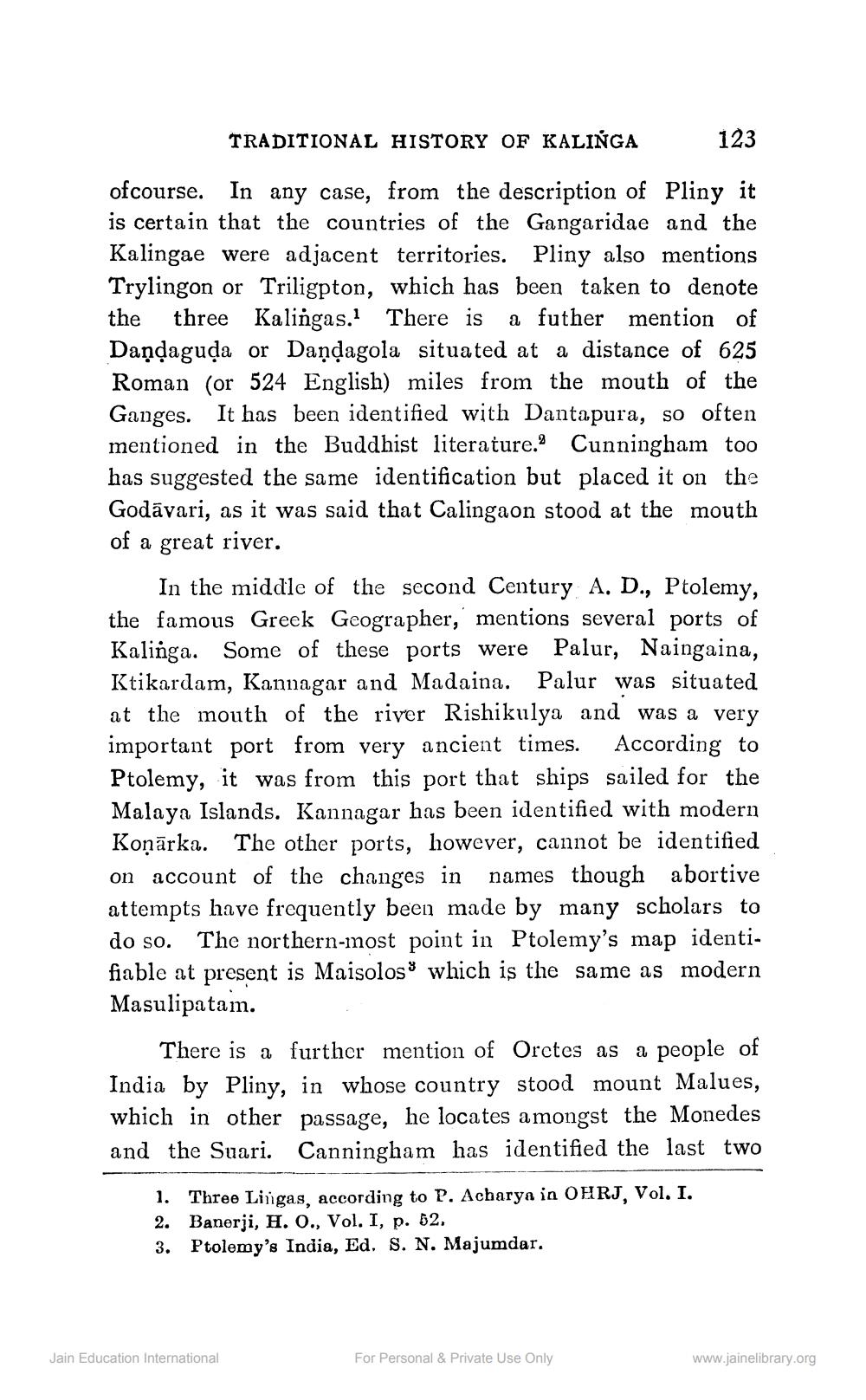________________
TRADITIONAL HISTORY OF KALINGA
123
ofcourse. In any case, from the description of Pliny it is certain that the countries of the Gangaridae and the Kalingae were adjacent territories. Pliny also mentions Trylingon or Triligpton, which has been taken to denote the three Kalingas. There is a futher mention of Daņdaguda or Daņdagola situated at a distance of 625 Roman (or 524 English) miles from the mouth of the Ganges. It has been identified with Dantapura, so often mentioned in the Buddhist literature. Cunningham too has suggested the same identification but placed it on the Godāvari, as it was said that Calingaon stood at the mouth of a great river.
In the middle of the second Century A. D., Ptolemy, the famous Greek Geographer, mentions several ports of Kalinga. Some of these ports were Palur, Naingaina, Ktikardam, Kannagar and Madaina. Palur was situated at the mouth of the river Rishikulya and was a very important port from very ancient times. According to Ptolemy, it was from this port that ships sailed for the Malaya Islands. Kannagar has been identified with modern Koņārka. The other ports, however, cannot be identified on account of the changes in names though abortive attempts have frequently been made by many scholars to do so. The northern-most point in Ptolemy's map identifiable at present is Maisolos' which is the same as modern Masulipatam.
There is a further mention of Orctes as a people of India by Pliny, in whose country stood mount Malues, which in other passage, he locates amongst the Monedes and the Suari. Canningham has identified the last two
1. Three Liigas, according to P. Acharya in OHRJ, Vol. I. 2. Banerji, H. o., Vol. I, p. 62. 3. Ptolemy's India, Ed. S. N. Majumdar.
Jain Education International
For Personal & Private Use Only
www.jainelibrary.org




